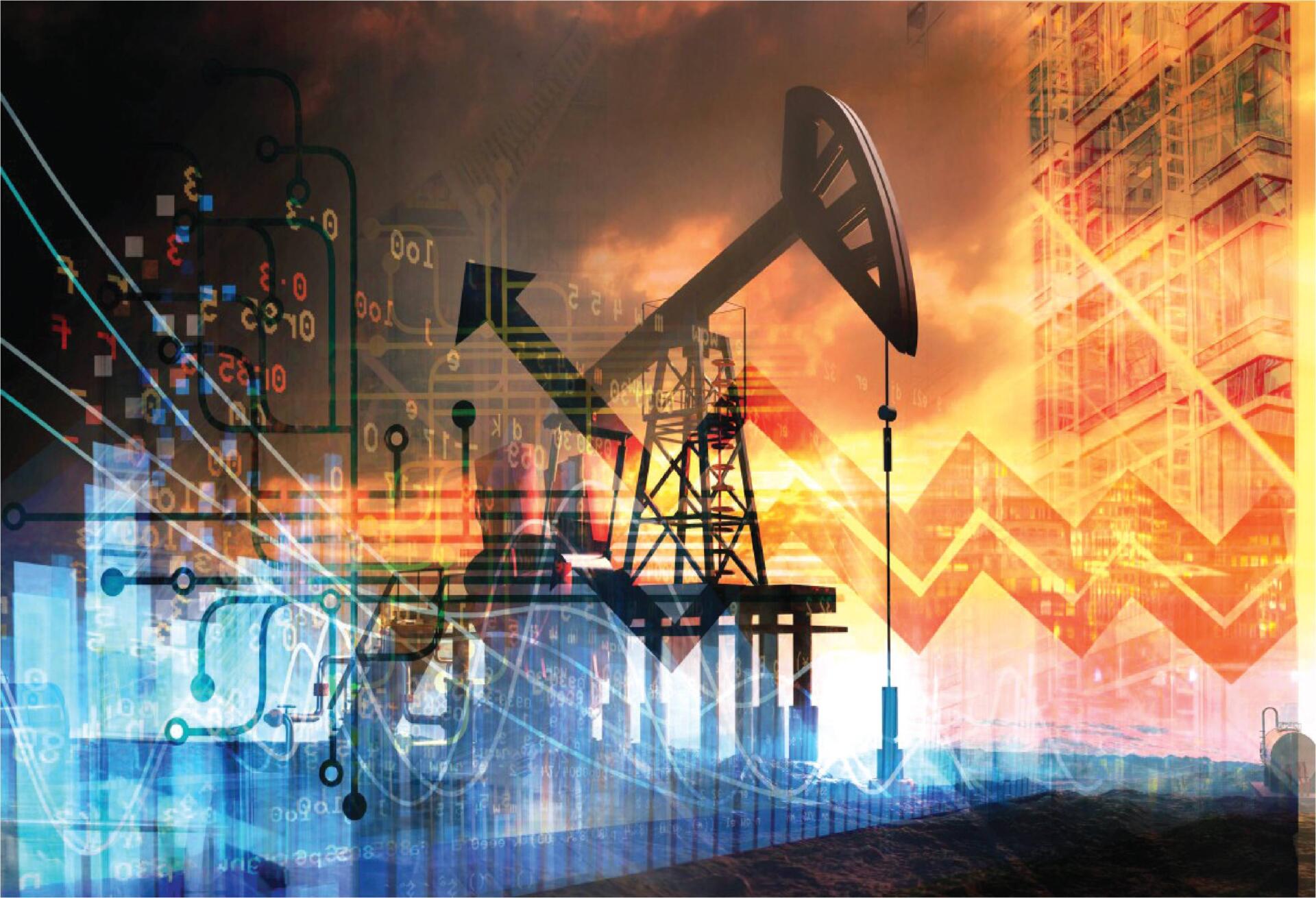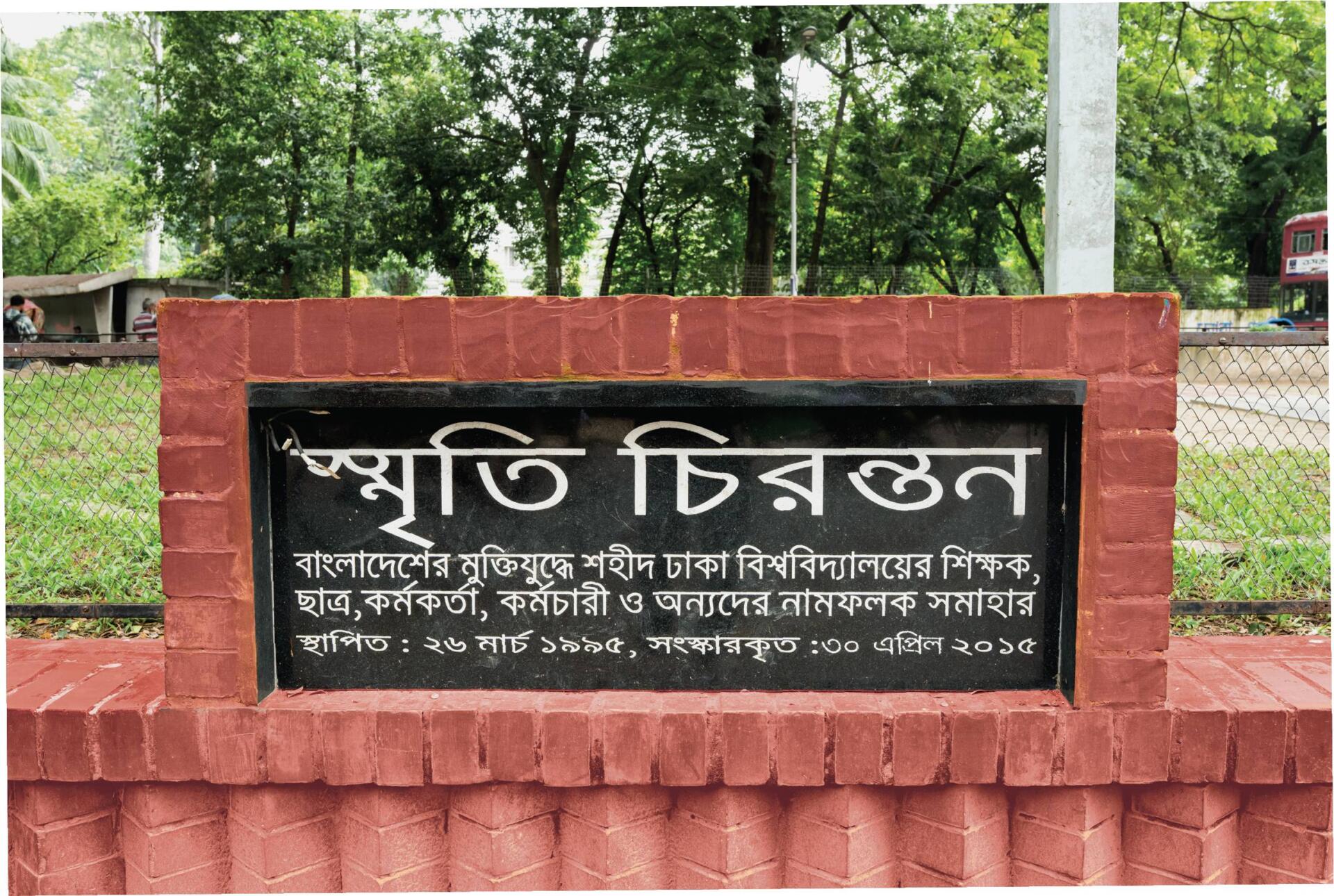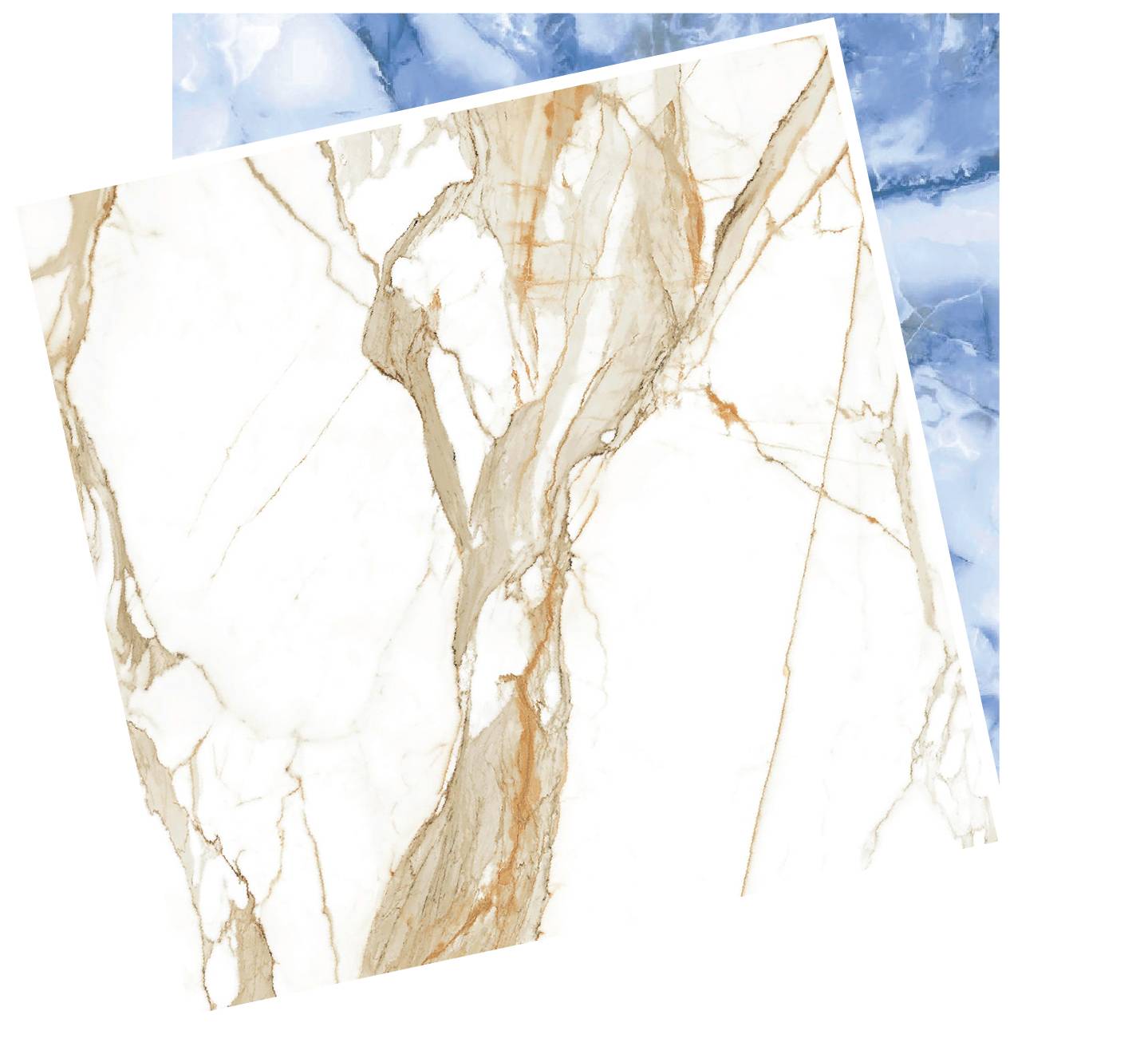8TH ISSUE

Is Bangladesh’s Economy at its Peril
Import dependency in energy sector increasing foreign exchange crisis One persistent issue that continues to affect the Bangladesh’s economic landscape is inflation. Inflation, the rising cost of goods and services over time, poses a significant challenge to both low-income households and industries alike. Recent data from the Bangladesh Bureau of Statistics (BBS) paints a grim picture: Food inflation has rocketed to 12.54 per cent, its highest in 11 years, pushing countless households into financial uncertainty. Concurrently, Bangladesh’s foreign currency reserves have plummeted $1.62 billion within 20 days, a staggering decline from $23.06 billion foreign exchange reserves recorded at the end of August. Fueled by a decline in remittances, stagnant exports and increased import pressures, these economic tremors have created certain economic uncertainties. Understanding Inflation Before examining the effects of inflation, it’s crucial to understand the factors driving it. In Bangladesh, inflation is now driven by cost-push factors such as increased producer spending and rising electricity and gas prices, particularly fuel oil, transport and also corruption cost with volatile exchange rates and dollar crisis. In recent years, Bangladesh has experienced an upward trend in inflation rates, affecting the lives of millions. Disproportionate Impact on Low, Fixed-Income Groups Almost all people of limited income and lower middle class, middle-class families are bearing the brunt of the pinching inflation as their earnings often fail to keep pace with rising prices. These households find it increasingly challenging to afford basic necessities. The burden of inflation extends to housing, education, healthcare, and transport. High inflation has been prevailing in the country for a long time. However, the situation has worsened in recent times, as shows government statistics. Another major problem with the inflation is worker unrest. This in turn increases the pressure on the wages of the workers and consequently increases the cost of production. Which increases the price of the product and ultimately reduces the demand. Surging Food Inflation 11-Year High The Bangladesh Bureau of Statistics issued an inflation update on September 11, revealing that food inflation had surpassed 12.5 per cent. The BBS data indicated that food inflation reached 12.54 per cent in August. The last time food price inflation had risen to such height was in January 2012 when it reached 12.73 per cent. Notably, food inflation entered double digits for the first time in a decade in August of the previous year, according to BBS and Bangladesh Bank data. In BBS’ calculations, headline inflation climbed to 9.92 per cent in August, marking a shift from two consecutive months of decline. This places the inflation rate on the brink of touching 10 per cent. In July, the food inflation stood at 9.76 per cent but surged to 12.54 per cent in August. Non-food sector inflation in August was recorded at 9.92 per cent in the month. Is Bangladesh’s Foreign Currency Reserve in Jeopardy? Bangladesh’s foreign currency reserves continue to face pressure, due primarily to the central bank’s dollar sales to cover essential imports. A decline in remittances has further strained the Bangladesh Bank’s reserves, which dropped $1.62 billion within the last 20 days, as reported on September 21. This decline is notable considering the reserves were over $23.06 billion as of August 31, now decreased to $21.45 billion. During this period, a significant payment of $1.31 billion to the Asian Clearing Union (ACU) for July-August imports played a role in diminishing the reserves. Additionally, a 13 per cent decrease in remittances over July-August, along with the necessity of providing dollars to commercial banks for loan settlements and import bills, has impacted the reserves. The central bank regularly sells dollars to various commercial banks to meet diverse expenses, particularly import costs. Moreover, a part of the foreign currency earned from exports and remittances directly contributes to the reserves. Foreign loans also directly bolster the reserves. However, the recent drop of $1.62 billion in foreign currency reserves can be attributed to these combined factors. How ceramic sector affected by higher inflation? The ceramic sector is grappling with significant challenges due to rising inflation and fluctuations in the exchange rate. Being an actively involved participant in international trade, Bangladesh’s economy is intricately linked with exchange rates, influencing economic activities and inflation by altering the prices of domestically produced goods and services. In the ceramics industry, a substantial portion of raw materials required for production is imported, necessitating heavy reliance on foreign currency. The Bangladeshi Taka has depreciated by 30 per cent against the US dollar since the last quarter of 2021, escalating material costs for the ceramics industry and directly impacting operational expenses. Furthermore, Bangladesh faces a local annual inflation rate more than 10 per cent, compounding challenges for the ceramics business. Increasing costs of imported raw materials, combined with domestic inflation, higher electricity and fuel price, transportation costs, high interest and exchange rate, pose significant hurdles to the sector’s profitability and sustainability. Additional pressures come from a recent 126 per cent increase in gas prices and gas rationing. But it has not been possible to adjust the price of the finished product accordingly. Various disruptions, including raw material price rise, global recession risks, shortages in raw materials and logistics capacities, global labour scarcity, and energy shortages, have disrupted the entire supply chain. Consequently, ceramic industry production has been severely affected. Md. Mamunur Rashid FCMA Senior Vice President, BCMEA Additional Managing Director X-Index Companies In the light of these challenges, Md. Mamunur Rashid, Senior Vice President of BCMEA and Additional Managing Director of X-Index Companies, suggests that the government should encourage foreign direct investments in the industry in economic zones. He recommends continuing tax holidays for a minimum of five years to support the sector. Additionally, he advocates measures against unfair trade practices such as under-invoicing of imported tiles to safeguard the interests of entrepreneurs in the ceramic industry. Mr Mamun emphasises the need for research and development efforts to economise on energy costs and calls for appropriate and adequate training programmes to develop a skilled labour pool in the sector. These
Read More
Memory Eternal In Remembrance of their sacrifice
Military convoys were heard marching through the Dhaka University campus roads at night on 25 March 1971. Three heavily weaponised regiments – the 18th and the 32nd Punjab, and the 22nd Frontier Force– entered through the north, the south, and the east. A massacre was unfolding! The ground pads of their tanks grinded with the asphalt as they entered, rifles cocking and loading. The attack was directed towards the intellectuals and the nationalists. Operation Searchlight, as it was infamously known to be, targeted the Dhaka University that night. The whole night swept across like a blood-stained hurricane, dark and gore. Intellects and teachers such as Professor Anwar Pasha, Professor Gobindo Chandra Dev, and Professor Jyotirmoy Ghuha Thakurta were, among others, lost. At around 12’o clock, Jahurul Haq Hall and Jagannath Hall were attacked with mortars and continuous firing, as many as 34 more were killed. The martyrs included the staffs of the university. On that dreadful night, Bangabandhu Sheikh Mujibur Rahman was arrested. Next day, Major Ziaur Rahman proclaimed independence of Bangladesh from Chittagong on behalf of Bangabandhu. And on 10 April, a provisional government was formed in Baidyanathtala of Meherpur. Bangladesh fought back and eventually came out victorious. After massacres and a nationwide uprising, about 93,000 Pakistani troops surrendered to the joint forces on 16 December 1971. The Memory Eternal The University of Dhaka was the heart of the rebellion that contributed to the birth of the nation-state. The students remember passingby, and almost every time, being driven by compassion to lay their inquisitive eyes on the canopied patch of elevated platform that held the memorial. Names of the teachers, students, and staff of Dhaka University who were martyred on the 25 March, were memorialised in 1995 first, on what is known as The Memory Eternal. Located infront the Dhaka University Vice Chancellor’s Bungalow and at one end of Fuller Road, the Memory Eternal consists of rectangular concrete slabs and terracotta designs with poems and clay murals. As one closes in on the site from any direction, a raintree is noticed, branches of which mothers the entire area. The tree holds within itself, the memories of the fearful night, never forgotten. It has seen red and felt tremorson that night, and the very roots have absorbed from the soil, the blood of the martyrs. Under the tree stands the concrete slabs. A few steps up stairs, and you will come across the first poem that warms the heart-words of Tagore himself, speaking of the souls that are immortalised. Another slab carries the words of the national poet Kazi Nazrul Islam and speaks of their sacrifice. The rebel poet calls upon everyone to remember them. The other slabs carried the names of 194 martyrs of Dhaka University on 25 March, on a black plaque written in white ink. On the back are terracotta murals, portraying the olden lives of the evergreen villages, the red and green flag under attack by the meager tyrants, and figurative chains binding the oppressed citizens of East Pakistan. The Memory Eternal or “Sriti Chirantan” was recognised as Dhaka University memorial initially, and in 2015, it was renamed as the “Memory Eternal.” The designers were Abdul Mohaimen and Mashiuddin Shaker. Around the Memory Eternal, there are mostly students, chatting and sipping on tea from a cup under the shade of the raintree. As the sun sets, the darkness is chased away by lights pointed at the memorial, and that is another site to be hold.
Read More
SACMI’S Challenge ZERO-EMISSION CERAMIC KILNS
In the world of ceramics, the name of SACMI is known as the world leader in the supply of advanced technologies for Ceramics and Advanced Materials through continuous development in innovation. The company’s strong positioning on the world market, and its relentless thrive for ensuring high quality standards and customer service is praiseworthy. The Ceramic Industry is focusing on bringing innovative solutions and effective alternatives of traditional machineries through research. The company is focused on working for development of alternative fuels, digitisation and heat recovery aimed at zeroing or reducing consumption in other stages of the process. These are the three pillars of the modern approach to ceramic kiln design, which SACMI recently presented to the market with the first prototype of a 100 per cent hydrogen-fired kiln. The presentation was made during the ‘open week’ organised by SACMI, which took place at the same time as the CERSAIE trade fair. Over 400 international customers of 90 delegations from 35 countries visited the fair. “Making ceramic manufacturing more sustainable is the primary challenge that SACMI has been pursuing for years, implementing optimisations and innovations in all areas of the plant, from forming to firing,” explained SACMI President Paolo Mongardi. Firstly, the kiln accounts for a good 37 per cent of total factory emissions, 46 per cent if one considers all thermal processes (kiln and drier). “With the FMH Maestro, we developed the world’s first industrial kiln fired using up to 50 per cent hydrogen. Today we are taking a further step towards what will be a potentially zero-emission kiln.” The prototype is ready and will be tested to make actual products in the coming months. Meanwhile, the market is moving towards new machines with the full digital management of all parameters in order to optimise quality and consumption. The project The prototype kiln implemented by SACMI is capable of working with variable mixtures of methane and hydrogen – in any percentage – and up to 100 per cent pure hydrogen. The kiln will be ‘switched on’ over the next few weeks, to test its effect on actual products and to take on significant technological challenges, such as the fact that hydrogen has a different calorific value compared to methane and the corrections necessary for managing the firing curves and material feed. From this point of view, the digital control of parameters (e.g. oxygen content at every point in the process) is the prerequisite of this development and has already been implemented in the ‘Maestro’ range of kilns, starting from the FMD model, introduced by SACMI in 2022. The fuel The pure hydrogen production and storage station has already been inaugurated at the SACMI Forni and Filters site in Salvaterra di Casalgrande. The facility, one of the first of its kind in Italy, consists of an electrolyser where hydrogen is produced at a rate of 20 Nm‑ per hour. It is then compressed to increase the outlet pressure from 8/12 bar to approximately 200 bar. This is essential in order to make storage easier, since one of the ‘defects’ of hydrogen is that it is very voluminous (much more so than methane/LPG and up to seven times more voluminous for the same calorific value). The third and last station involves its storage in cylinders, which for the prototype that will be tested in the Lab, “is equivalent to an operating autonomy of 2.5 days” – underlines Daniele Baldini, product manager at Kilns and Driers BU Tiles, SACMI – “sufficient for carrying out full testing on the products”. The advantages Currently, SACMI’s best-selling kiln globally is the modulated air-gas FMA model, which allows air and fuel mixtures to be optimised at every stage, optimising consumption and with great advantages in terms of product quality (especially for complex products, such as slabs), repeatability and consistency of the process. More and more customers are moving towards the latest FMD models (with digital firing parameter and recipe management) and FMH models (already designed for use with methane-hydrogen mixtures of up to 50 per cent). What are the real advantages of ‘full hydrogen’? You just have to consider that by adding 50 per cent clean hydrogen to the mixture, the total saving on CO2 emissions is as much as 23 per cent. This would increase to 55 per cent (more than double) if the mixture were 80 per cent H2 + 20 per cent methane. “What remains constant is the amount of energy required for the process,” notes Baldini, adding, “while to obtain the same amount of energy, a larger volume of hydrogen is required as its calorific value is lower than that of methane (2560 kcal/m3 compared to 8600 kcal); Hence more than proportional savings in emissions to the increase in the amount of hydrogen in the mixture”. This is why it makes sense to increase the hydrogen in the mixture and to get ready for the evolution of the infrastructure, which in all probability will lead to hydrogen-methane ‘blends’ being supplied in increasing but variable amounts. “From this point of view, the way forward already appears to have been decided,” says Claudio Ricci, Tiles R&D Coordinator, BU Tiles, SACMI. “So technology suppliers around the world are getting ready for this development, without forgetting the two conditions which make this scenario viable and truly beneficial to the environment.” First, hydrogen has to be obtained from renewable sources (or rather the electricity needed for the electrolysis process has to be). Secondly, in order for it to be actually applied on an industrial level, the problem of storage has to be overcome (the laboratory prototype is one thing; in a ‘real’ kiln the system would have to be powered directly from the supply network). The 100 per cent H2 kiln is the main but not the only development at SACMI. “By 2024 we will also present a new prototype for an all-electric kiln, exploring all the opportunities in this area as well, with the aim of being ready for the evolution of the infrastructure and
Read More
Made More Spacious with Sheltech 1m x 1m Tiles
Sheltech has entered the ceramics market recently with their premium wall and floor tiles. The ceramic newcomer has been performing outstandingly in the industry with various tiles segments of different shapes and sizes, and designs. Sheltech, a 35-year-old group of industries, initially deep-rooted itself in the real estate industry. Sheltech Ceramics Limited recently launched a venture of Sheltech group, initiated in February 2019. The factory has been set up in Bhola, spread on 57 acres of land. Sheltech Ceramics has added production lines and increased production capacity to 420,000 square feet of tiles daily. This recent investment will potentially turn the company into one of the largest manufacturers in the tiles segment. In May 2022, S heltech introduced the largest tiles manufactured in Bangladesh; in other words, it has the first ever locally made 1 meter x 1 meter tiles. Among the three plants that Sheltech Ceramics has in its factory, the third plant was added to manufacture larger sized tiles, premium in quality. The size of such product makes any surface look more spacious, as fewer and thinner grout lines tend to create that impression. The room also feels streamlined when the floors are covered with larger than usual-sized tiles. The 1m × 1m tiles have a thickness of 12 mm and is made with eco-friendly materials resistant to thermal shock. Made to be strong and durable, this series of prime tiles is shiny and attractive, and helps bounce light around. Additionally, it is easy to clean and maintain. There are imported tiles that are similar to Sheltech Ceramics’ 1m × 1m, but they are imported as per necessity and costs a fortune. Sheltech Ceramics Ltd intends to shift the demand from imported tiles to domestically made ones, and manufacture a quality product within the price range of usual customers-henceforth started the manufacturing of the 1m × 1m tiles. An experiment conducted, and the research paper authored, by Jack Nasar, a professor from Ohio State University, and Saleheh Bokharaei (faculty at Shahid Beheshti University, Iran), on Perceived Spaciousness: Altering the six variable factors (VF) that directly effect perceived spaciousness, we can alter how roomy an office room or a bed room looks. The most obvious VF, size, is directly proportional to spaciousness; bigger size means more space. Light is a crucial second, followed by window size. Texture and wall murals are the fourth and fifth, any and all furniture being the last of the six, yet not the least. If you played around with the six variables, you can create different ambiances. The 2016 experiment by Jack and Saleheh had participants rating spaciousness and preference after being exposed to a space via virtual reality. Written by Chisty Rahim
Read More
RATARGUL Gowain’s Serene
Only a decade back, when considering a trip to Sylhet, most would think about visiting the lush green heavens of tea tree leaves at the wavy hills of century-old tea estates and the waterfalls. However, over the years, a freshwater swamp forest that flows through the arteries of Gowainghat, has cemented its place in the hearts of thousands of tourists who flocks there every season. It is the only swamp forest of sweet water in Bangladesh. The mighty Meghalaya pours into the Gowain, and a stream flows through the Chengi canal, flooding the entire region under 20-30 feet of water where serenely rests Ratargul with mysticism. Ratargul has an addictive aura. It is one of those spaces where one has to be physically present and let themselves be entirely engulfed by its charm to feel its truest essence. And Ratargul in monsoon, is impossible to encapsulate with words. Water lilies, both white and pink varieties, are a common sight, adding a soothing touch to the landscape. These floating plants not only enhance the beauty of the forest but also provide essential habitat and food for various aquatic creatures. One will also notice slender and tall cypress trees rise majestically from the water, creating a picturesque backdrop. There are numerous other kinds of tress, and once in a while you might be welcomed by monkeys hanging from them or birds singing back to the boatmen. These trees not only offer shelter to numerous bird species but also contribute to the overall biodiversity of the forest. Swamp Forest The moist and humid conditions of Ratargul support the growth of mosses and ferns too. They cover the rocks and tree trunks. Reaching Ratargul requires careful planning, as it is situated in a remote area. Here’s how to get there: By Air: The nearest major airport to Ratargul is Osmani International Airport in Sylhet. From the airport, you can hire a taxi or take a bus to reach Ratargul. By Road: You can reach Ratargul by road from Sylhet city. The journey takes 1.5-2 hours, and you can hire a taxi or use public transportation. Local Transport: Once you reach the nearest village, Gowainghat, you’ll need to hire a local guide or a boat to navigate through the water channels that lead to Ratargul. The boat ride is an integral part of the Ratargul experience, offering stunning views of the surrounding landscape. While Ratargul itself is typically a day-trip destination, you can find accommodation in nearby areas for a comfortable stay during your visit. The beautiful Sylhet city offers a wide range of accommodation options, including hotels, guesthouses, and resorts. It’s a convenient base for exploring other attractions in the region as well. Furthermore, the nearest town to Ratargul is Gowainghat, where you can find guesthouses and lodges. There are eco-resorts for a unique and eco-friendly experience, consider staying in one of the eco-resorts that have been established near Ratargul. These accommodations are often designed to blend seamlessly with the natural surroundings, providing a rustic yet comfortable experience. While planning your visit, remember to adhere to responsible tourism practices to protect this fragile ecosystem for future generations. A visit to Ratargul promises to be an unforgettable journey into the heart of nature’s wonders. Ratargul invites you to be its guest, offering a chance to escape the hustle and bustle of daily life and reconnect with the natural world. We must respect the regulations in place, support local communities, and engage with local guides who can deepen our understanding of this unique ecosystem. By doing so, we not only enhance our own experience but also contribute to conservation efforts that ensure Ratargul remains a pristine sanctuary for generations to come. It’s more than just a tourist destination – a testament to the exquisite beauty and resilience of the natural world. It is a place where you can find solace, inspiration, and a profound connection to the environment. Let’s also ensure that Ratargul’s magic endures for all to experience and cherish.
Read More
Events Of Ceramic Industry
Inauguration of “Selections” second outlet in Sylhet: Recently AkijBashir Group’s brands emporium “Selections” has opened a new showroom in Hadi Mansion, Pathantula, Sylhet. With the motto – “Select from the best”, the “Selections” brand was launched in October of last year in an aim to provide customers with a one-stop-ground for all of AkijBashir Group’s brand products under one roof with a vast array of ceramic tiles, boards, doors, sanitaryware, bathware and tableware. Inauguration of Flagship Showroom in Mymensing: RAK Ceramics inaugrated their Flagship Showroom in Kalibari Road, Mymensing. Get your desired RAK Tiles & Sanitarywares from the Showroom to decorate your space newly. Fresh Ceramics Organizes Dealer Tour in Thailand Meghna Ceramics Industries Ltd. (MCIL), a concern of Meghna Group of Industries (MGI), has earned the trust of Bangladeshi customers within a short time since its start in 2021. As a continuation to that success, a special dealer tour titled ‘Cutting the Edge’ was organized at Pattaya & Bangkok in Thailand during September 27- October 01, 2023. New ‘Robusto’ Floor Tiles Make a Splash in the Domestic Tiles Market An international quality tiles brand ‘Robusto’ has been added to the local market. Manufactured by the reputable company X-Ceramics, the ‘Robusto’ brand has entered the floor tiles market with a strong commitment to quality. X-Ceramics embarked on the journey to produce ‘Robusto’ floor tiles after more than two years of meticulous research. These tiles are versatile, finding applications in homes, offices, shopping malls, and factories.
Read More








